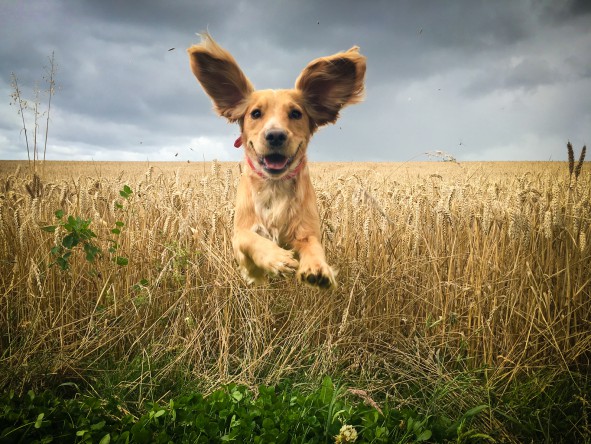
How Does Age Affect How Much Exercise Your Dog Needs
There are a few factors that can affect how much exercise your dog needs, and age is one of the biggest ones (along with their breed and general health).
As a general rule of thumb, your dog should be tired after exercise but not completely exhausted. This should ensure that they are burning calories and excess energy but still working within their comfort levels.
If they seem overly tired and are struggling physically after exercise, it’s a sign that they may be over exerting themselves and doing too much but if they aren’t tired, they probably aren’t burning quite enough energy to get to this point.
What counts as comfortable can vary a lot from dog to dog and age can also be a factor here too. Older dogs can tire more quickly than younger dogs, for example. Breed can also be a consideration as some breeds are naturally more inclined towards physical activity than others.
Exercise and Younger Dogs
Puppies tend to have boundless energy and if they’re also a breed that is very active and boisterous by nature, they’re probably reasonably active around the home at least. Another bonus of their exuberance is the opportunity to keep them stimulated and stop them causing lots of mischief.
Puppies don’t need to be walked as much as an adult dog. Experts from the Veterinary Information Network advise that overdoing things with your puppy can cause health problems further down the line, especially what they call “forced exercise” before the growth plates have closed – sometimes around 12 months of age in some breeds. “Forced” exercise can include playtime with adults dogs, lots of fetch games with balls and Frisbees and jogging with you.
Exercise and Older Dogs
Older dogs often aren’t as active as their younger counterparts due to health constraints. They are more likely to be affected by joint issues such as arthritis that can make them less mobile and not as able to take part in exercise as easily. Exercise is still important in this scenario but it’s a balancing act between trying to keep them fairly active but not pushing them too far.
Older dogs still have exercise needs to keep them active and stimulated but the intensity and pace generally comes down a notch compared to the kind of walks they most likely enjoyed previously.
Going on shorter walks two or three times a day can suit older dogs better than one longer walk, especially if they have some mobility issues.